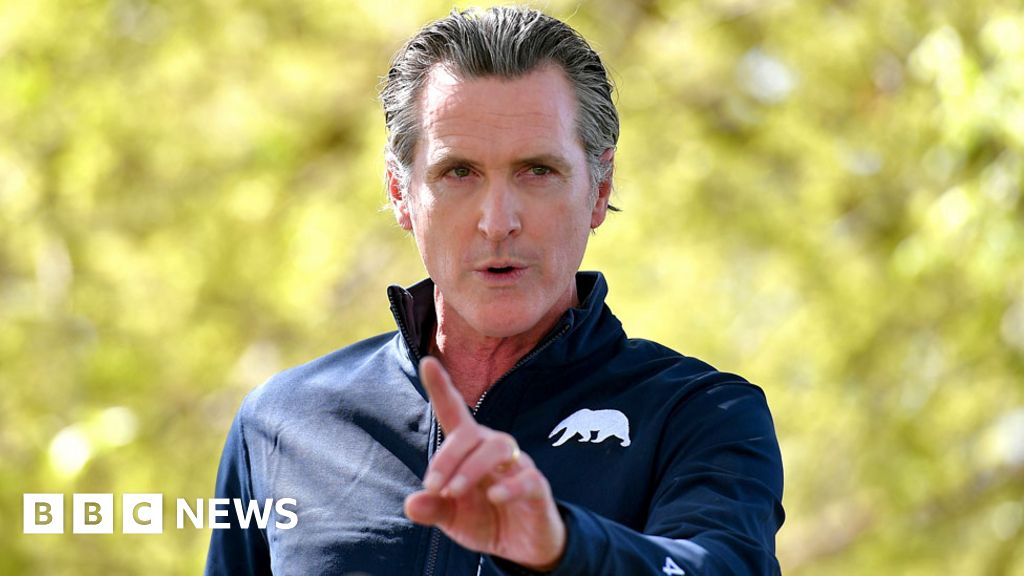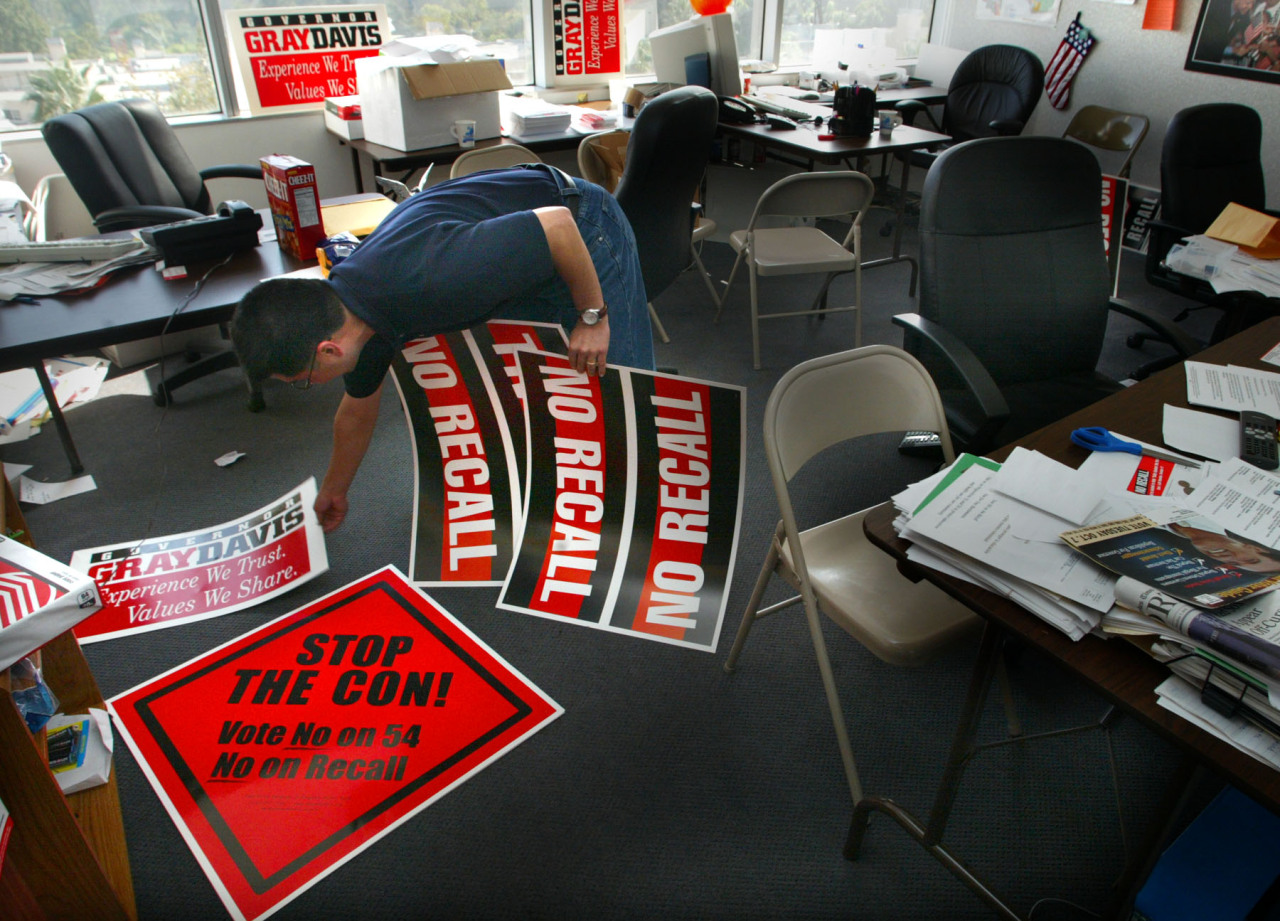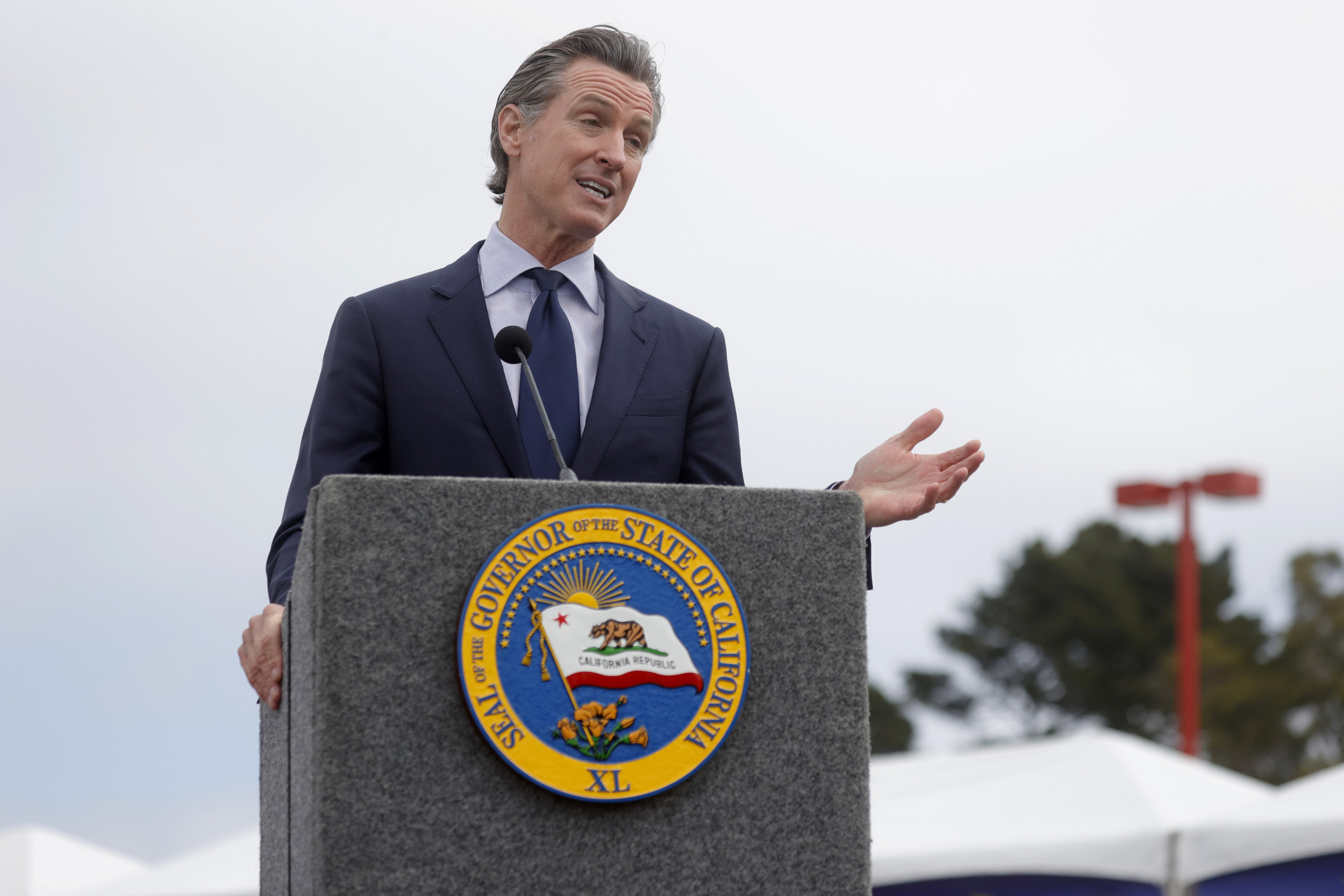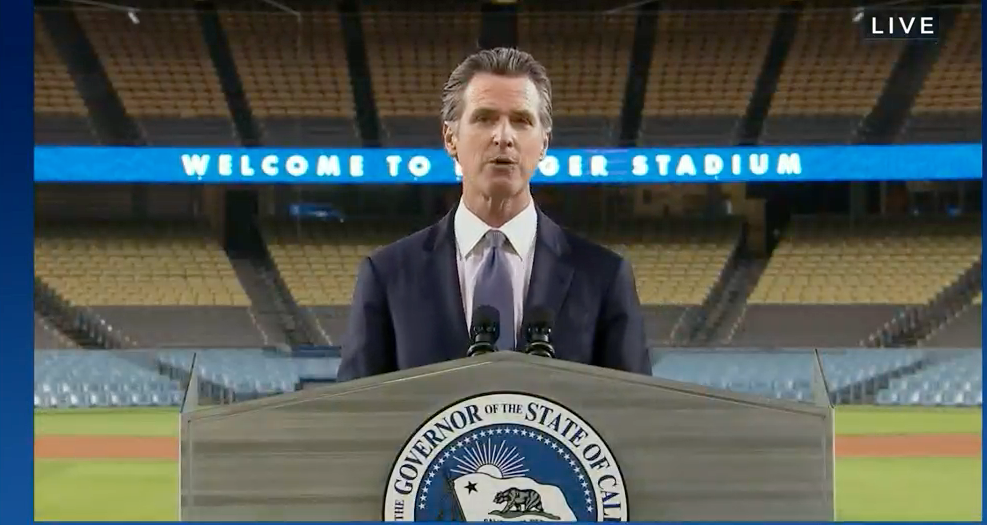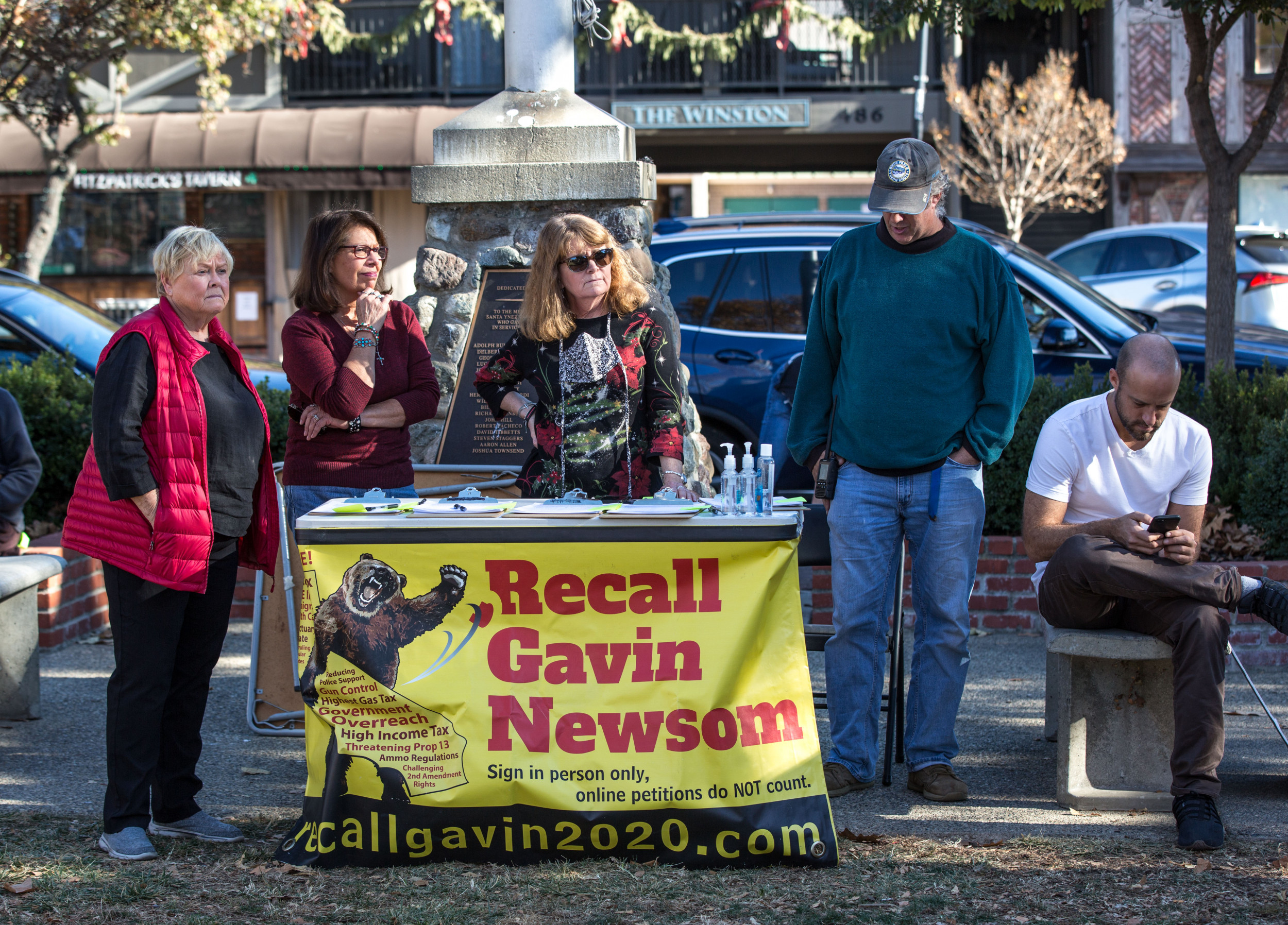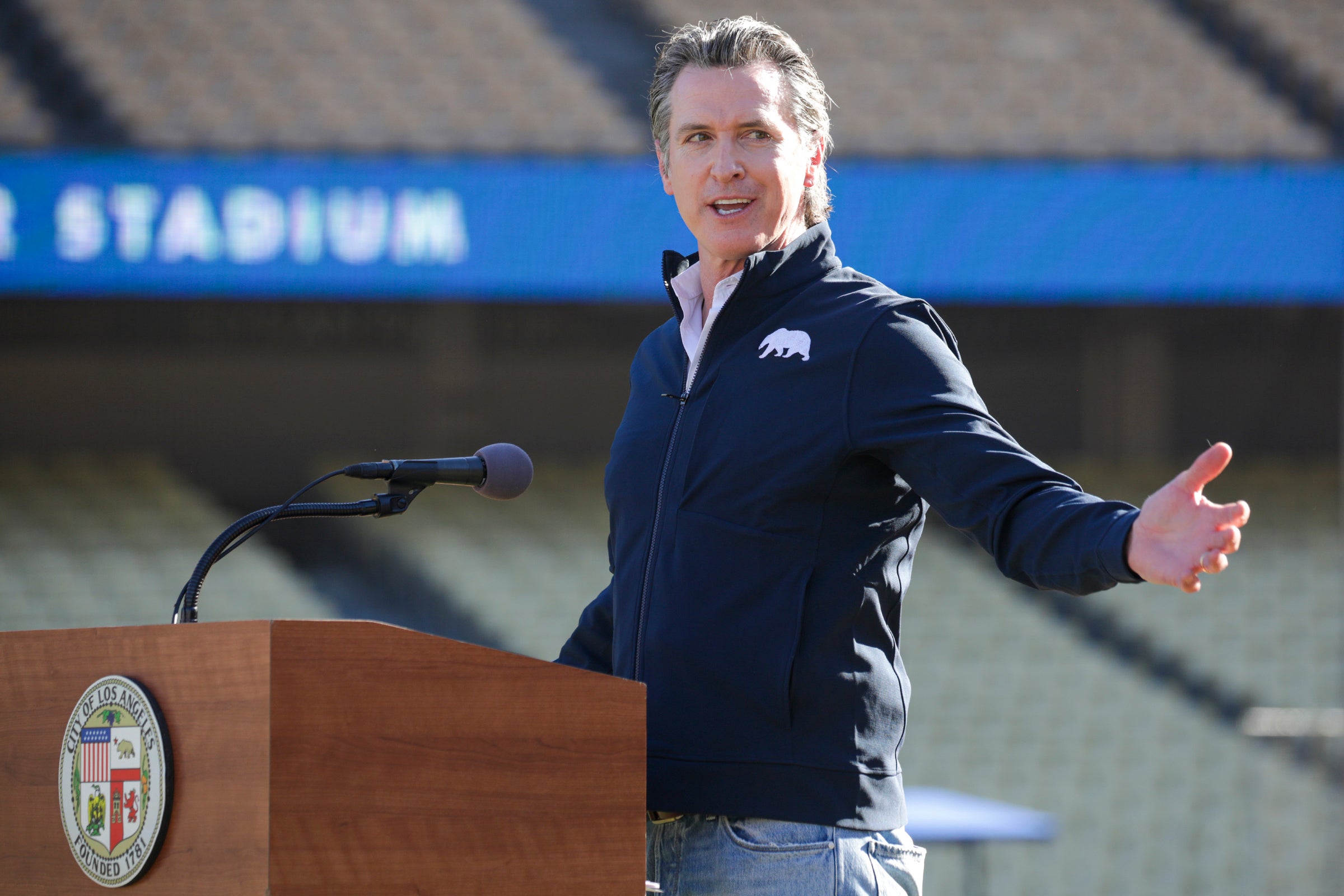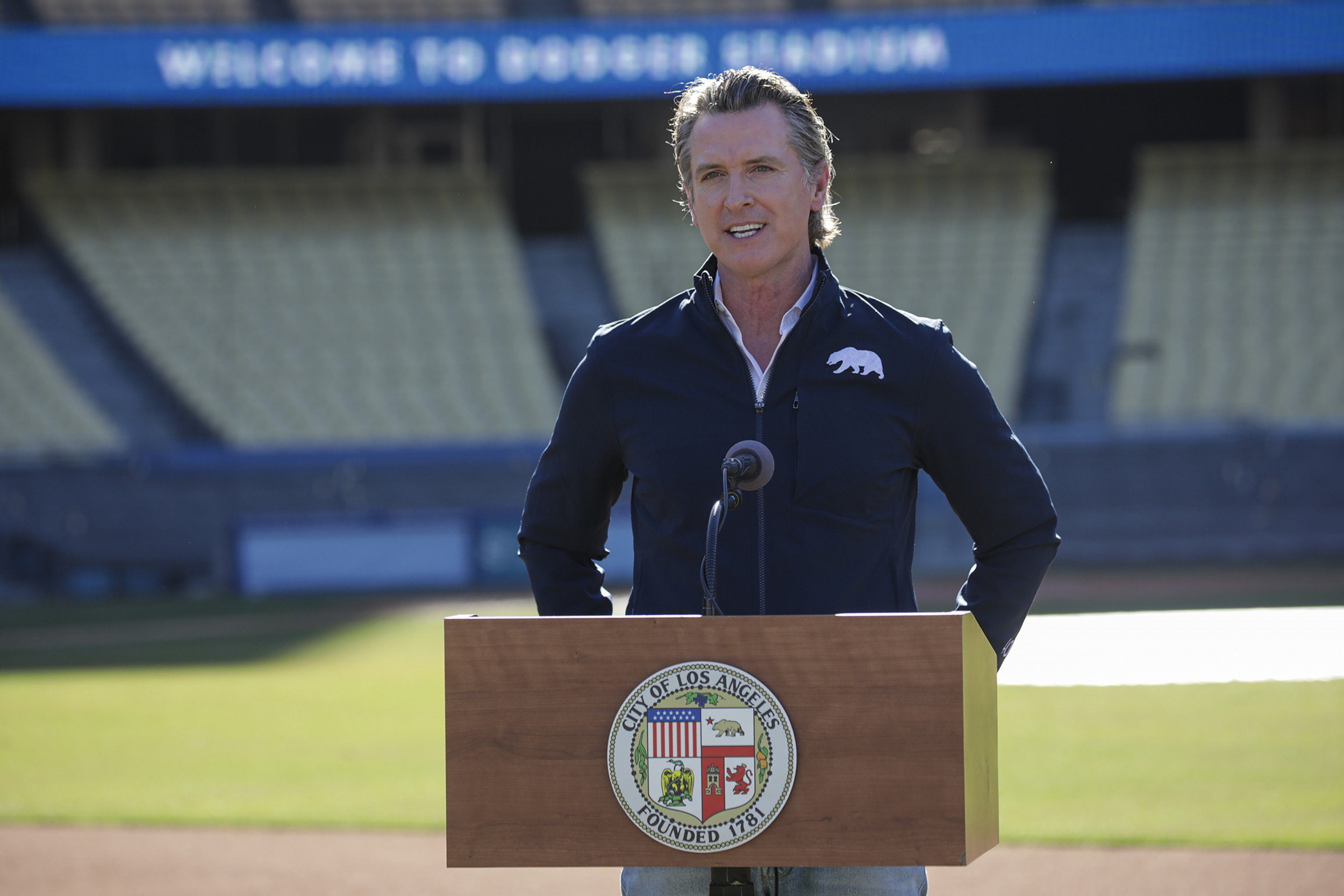As of April 30, 2021, nearly a year after the recall campaign was approved for petition circulation by the secretary of state, Trump had yet to personally comment on the recall effort. In September 2021, Trump commented on the recall election, claiming without evidence that it was "rigged". Some of Trump's allies also asserted before election day that the results would be rigged and that Newsom could win only by fraud.
The day before the election, Elder's website asserted fraud had already been detected and linked to a petition for citizens to sign "demanding a special session of the California legislature to investigate and ameliorate the twisted results" of the election. As of 2021, California is one of 19 states to allow recall elections. Under state law, any elected official may be subjected to a recall. To trigger a recall election of a statewide elected official, proponents must gather a certain number of signatures from registered voters within a certain time period. The number must equal at least 12 percent of the votes cast in the previous election for that office. Based on the previous gubernatorial election, the 2021 recall petition required 1,495,709 signatures.
The recall campaign submitted 2,117,730 signatures by the March 2021 deadline. The count yielded 1,719,943 valid signatures, which was roughly 13.8 percent of votes cast in 2018, exceeding the 12 percent threshold required to trigger the recall election. Prior to this election, the only other gubernatorial recall attempt in California to qualify for the ballot happened in 2003, which resulted in Gray Davis being replaced by Arnold Schwarzenegger. This election is the result of one of 179 attempts to recall a state-level elected official in California since voters gained the right to recall in 1911, one of 55 attempts to recall a governor, and one of six such efforts to remove Newsom. Every California governor since 1960 has experienced some form of a recall attempt.
Of the ten prior recall attempts on state-level elected officials in California which led to special recall elections, six ultimately resulted in their removal from office by voters. This recall election is the fourth gubernatorial recall election ever held in the United States; the other three being North Dakota in 1921, California in 2003, and Wisconsin in 2012. If a majority of voters who cast ballots in this election vote "no" on the recall, Gov. Newsom will remain Governor of California. If a majority of voters vote "yes" on the recall, the replacement candidate on the recall ballot who receives the greatest number of votes will replace Gov. Newsom and become California's new governor.
From 2003 to 2019, Ballotpedia tracked 25 gubernatorial recall efforts against 22 governors. During that time, two recalls made the ballot and one governor was successfully recalled. Former California Gov. Gray Davis was recalled by voters in 2003. The only other governor to ever be successfully recalled was former North Dakota Gov. Lynn Frazier in 1921. In 2012, Wisconsin voted to retain former Gov. Scott Walker in the recall election. Aaron Blake of The Washington Post described Newsom and the Democratic Party of California's recall strategy as "Newsom-or-bust," speculating that a Democrat with broad name recognition or popularity on the ballot could have hurt Newsom's chances of survival.
In this recall election, there was no similar Democratic politician for Democratic voters to coalesce around. Newsom and those campaigning on his behalf told voters to vote "No" on the recall question and leave the replacement candidate question blank. The2021 California gubernatorial recall election is an upcoming special election on whether to recall current California Governor, Gavin Newsom. This election is scheduled for September 14, 2021, with every registered and eligible voter set to receive a ballot at their address for the option to vote by mail starting August 16, 2021.
Special elections tend to attract fewer people to the polls, but mail-in voting may give the numbers a boost. During the last recall election of a California governor, in 2003, 61 percent of registered voters cast ballots. Opponents of Democratic Gov. Gavin Newsom of California have gathered enough signatures to trigger a recall election for him on Sept. 14 — only the fourth gubernatorial recall election in U.S. history. If a majority of recall voters vote "yes," Newsom will be removed from office. What's interesting about the vote for the governor's replacement is that the new governor is selected by a plurality rather than a majority; that is, the new governor is the candidate who receives the most votes, regardless of whether they earned a majority. For example, when Gray Davis was recalled, Arnold Schwarzenegger became governor with just under 49% of the vote,nota majority of the votes.
For this recall, currently, it appears that the voters are very split on who they would like to replace Newsom, so the new governor could be elected by a fairly small percentage, perhaps less than 25% of the votes. It is possible more people would have voted to keep Newsom than for the new governor, which many would consider an odd election outcome. Tuesday is the final day for California voters to return their vote-by-mail ballots or cast ballots at voting centers in the gubernatorial recall election.
Following legislation, all registered voters will be mailed a ballot for any elections held in 2021, which would include the gubernatorial recall election. On August 27, 2021, Judge Michael Fitzgerald of the United States District Court for the Central District of California ruled that the state's recall process was constitutional. Two voters sued Weber on August 14 alleging that the second question in the recall election was unconstitutional. The plaintiffs claimed that the second part of the recall election, which allows a candidate to win by plurality instead of by majority, violated the Equal Protection Clause of the U.S. Constitution because Newsom could have received more votes in the first question on the ballot than the winning replacement candidate received. The first asked whether Newsom should be recalled from the office of governor.
A majority vote was required on the first question for the governor to be recalled. The candidate with the most votes on the second question would win the election, no majority required. If Newsom had been recalled, the candidate with the most votes on the second question would have won the election, no majority required. In California, 12 percent of registered voters in the last election for the governor's office from at least five counties are required to get the effort off the ground.
That means supporters of the Newsom recall effort needed 1.495,709 valid signatures. The number is actually higher because of the likelihood of duplicate or invalidated signatures that are thrown out. California's 12 percent threshold is among the lowest in the country when it comes to gubernatorial recalls. Voting in the California gubernatorial recall election closes Tuesday night, and mail-in ballot turnout is high in areas likely to be in favor of Gov. Gavin Newsom.
After that question is the list of qualified replacement candidates voters can choose from. If a majority of voters answer "yes" to the recall question, the replacement candidate with the highest number of votes will be elected for the remainder of Newsom's term, which ends in January 2023. Newsom, a Democrat who had been heralded as a potential presidential contender, found himself at the center of the country's divisions over COVID-19 and mandates aiming to keep people safe. He was applauded for his work at the beginning of the pandemic, leading the first state to shut down. But after months of tight restrictions and public flubs, that same work helped ignite the effort that led to the fourth gubernatorial recall election in U.S. history.
On July 24, 2021, the California Republican Party's steering committee voted to allow the party to endorse a candidate in the recall election, if the candidate received at least 60 percent of delegate votes in an upcoming August 7 meeting. Some Republicans opposed the move out of concern that endorsing a single candidate would reduce Republican voter turnout. Voters' ability to recall an elected official in California is the result of Progressive Era reforms enacted in 1911 alongside the introduction of the ballot initiative and women's suffrage. The 2003 recall election was the first time a gubernatorial recall attempt led to an election in California and resulted in the successful recall of Governor Gray Davis, who was replaced with Arnold Schwarzenegger.
Californians will have the option to vote in person during the recall election or vote by mail. First, voters are asked if they want to recall Gov. Newsom, yes or no? If more than 50% of voters vote no, then Newsom stays in office. Early voting in the recall election began in mid-August when every registered voter in the state received a ballot from their county elections office.
Since then, both Republican and Democratic party organizers have been working to boost turnout throughout California, which hasn't had a statewide recall election since the ousting of Gov. Gray Davis in 2003. Earlier this week, gubernatorial recall election ballots started arriving in Californians' mailboxes. But many others either aren't aware that the election is taking place or are confused about how the two-part ballot works.
We present results for non-Hispanic whites, who account for 41 percent of the state's adult population, and also for Latinos, who account for about a third of the state's adult population and constitute one of the fastest-growing voter groups. We also present results for non-Hispanic Asian Americans, who make up about 16 percent of the state's adult population, and non-Hispanic African Americans, who comprise about 6 percent. Results for other racial/ethnic groups—such as Native Americans—are included in the results reported for all adults, registered voters, and likely voters, but sample sizes are not large enough for separate analysis. Results for African American and Asian American likely voters are combined with those of other racial/ethnic groups because sample sizes for African American and Asian American likely voters are too small for separate analysis. We compare the opinions of those who report they are registered Democrats, registered Republicans, and decline-to-state or independent voters; the results for those who say they are registered to vote in other parties are not large enough for separate analysis. We also analyze the responses of likely voters—so designated per their responses to survey questions about voter registration, previous election participation, intentions to vote this year, attention to election news, and current interest in politics.
For question 6 , only candidates with both significant media attention and sufficient resources for statewide campaigning were included; five of the candidates met this criteria. Respondents could also name someone else and specify a candidate if their preferred choice was not mentioned. California voters can return their ballots via the United States Postal Service or any official vote-by-mail drop box, or drop them off at any participating vote center in certain counties. No postage is necessary, but voters must sign the back of the vote-by-mail envelope. Ballots returned by mail must be postmarked on or before Election Day and be received by county election officials by September 21.
Californians also have the option to vote, or register, in person either early or on Election Day. While dates, times and locations for early voting vary by county, polls are open from 7 a.m. A voter casts ballot for the 2021 California gubernatorial recall election at a polling place inside St. Gregory's Episcopal Church in San Francisco, California Tuesday, Sept. 14, 2021.
Metro will offer free rides on its trains and bike-share system, joining already-free buses, on Election Day Tuesday to ensure people can cast their ballots in the gubernatorial recall election. Republican conservative radio show host Larry Elder, center, argues with a TV reporter during an interview after visiting Philippe The Original Deli during a campaign for the California gubernatorial recall election on Monday, Sept. 13, 2021, in Los Angeles. Larry Elder is criticizing California Gov. Gavin Newsom over the embattled Democratic governor's closing message to supporters to vote "NO" in Tuesday's gubernatorial recall election. Larry Elder, Republican gubernatorial candidate for California, speaks at a campaign watch party after losing the gubernatorial recall election in Costa Mesa, California, U.S., on Tuesday, Sept. 14, 2021. Newsom acknowledged the recall election when it became likely to occur, calling the effort "partisan, Republican" and recruited nationwide Democrats to help fundraise against it.
A new requirement for gubernatorial candidates to disclose their most recent tax returns was passed into law in 2019, when Governor Newsom signed Senate Bill 27. Although the language of the law says that gubernatorial candidates must publicize the prior five years of their tax returns in order for their names to appear on a "primary ballot", the secretary of state applied the law to the recall election. The law has been cited as a potential reason for the major reduction in recall replacement candidates relative to the number of candidates in the 2003 gubernatorial recall. Beginning in 2017 and up to the 2021 gubernatorial recall, California's Democratic-led government enacted legislation to change how recall elections are conducted.
In addition, a new election law was misapplied to the 2021 gubernatorial recall election, while several proposed changes to the recall process failed in both the legislature and the courts. There are 46 candidates listed on the ballot — a mix of politicians, entertainers and business people, more than half of them Republican. If a majority votes in favor of a recall on Question 1, the challenger who receives the most votes will become governor. Larry Elder, a conservative talk radio host, leads the challengers in most polls. Since 1960, every California governor has faced a recall attempt. In 2003, Governor Gray Davis, a Democrat, lost to Arnold Schwarzenegger.
Since 1911, there have been 55 attempts to recall a California governor. The only successful recall campaign was in 2003 when voters recalled then-Gov. Republican candidate Arnold Schwarzenegger was one of 135 candidates to replace Davis. Schwarzenegger received nearly 49% of the vote to take the gubernatorial role. California's ballot due by Sept. 14 asks voters to consider a recall and choose one candidate from a field of 46 eager to replace Gov. Gavin Newsom. However, many voters are unaware of the election or confused about what's asked of them, says Sarah Hill, associate professor of political science at Cal State Fullerton.
In 2018, Gavin Newsom, then the lieutenant governor of California, was elected in a landslide as governor of the nation's most populous state with nearly 62 percent of the vote. Two years and a few months later, voters are about to be asked whether he should be ousted from office after one of six recall petition efforts against him gained enough signatures to qualify for the election. In what is sure to be a consequential recall election, 47 percent of likely voters are more enthusiastic than usual about voting. Republicans (54%) and independents (53%) are more likely than Democrats (40%) to say they are more enthusiastic than usual. Amid the ongoing COVID-19 pandemic, California has decided to employ an extensive vote-by-mail system for the recall.
With voters set to receive a mail ballot, how much confidence do California's likely voters have in their voting system? Fifty-six percent have a great deal (37%) or quite a lot of confidence (19%). Democrats (58%) are far more likely than Republicans (13%) or independents (30%) to have a great deal of confidence. More likely voters had confidence in California elections last September (56% today, 60% last September). San Mateo County voters also strongly opposed the recall, with 79% of the early ballots opposing the recall and just 21% supporting it, according to preliminary results from the San Mateo County chief elections officer.
Just like in Santa Clara County, Elder and Paffrath were the voters' top two replacement options, netting 29.9% and 17.5% of the vote, respectively. Two Republicans who dominated the recall effort early in the campaign — John Cox and Caitlyn Jenner — did particularly poorly in the two Silicon Valley counties. Cox, a businessman whose bus tours featured a grizzly bear, received just 6.1% of the votes in San Mateo County and 5.3% in Santa Clara County. Jenner, a gold medal-winning Olympian got just over 1% of the votes in each of the two counties.
Alameda County officials empty out a drop box for vote-by-mail ballots amid the California gubernatorial recall election, Tuesday, Sept. 14, 2021, in Piedmont, Calif. Republican conservative radio show host Larry Elder hugs a supporter at a rally for the California gubernatorial recall election on Monday, Sept. 13, 2021, in Monterey Park, Calif. John Tranchitella checks in at the polling place inside the Lakeside Park Garden Center to vote in the California gubernatorial recall election in Oakland, Calif. Thomas Pastrano votes in the California gubernatorial recall election at the polling place located inside the Lakeside Park Garden Center in Oakland, Calif.
President Joe Biden is making his long-touted visit to California on Monday in support of Gov. Gavin Newsom, with the pair expected to campaign in Long Beach as the gubernatorial recall election enters its final hours. The final reportfrom the Secretary of State's office, released on June 23, validated 1,719,943 signatures on the recall petition. The recall effort needed 1,495,709 verified signatures to trigger a recall election.
Early returns indicated a strong showing from Democratic voters and opposition to the recall. Among early voters, Democrats outnumbered Republicans by two to one – though gap was expected to shrink with a greater proportion of Republicans expected to cast their ballots on election day. Special elections often draw fewer voters, but mail-in voting expansions enacted due to the pandemic may have aided turnout. Millions of Californians cast their ballots ahead of election day, either by mail or at early voting locations, in a special election that is costing the state $276m.
Meanwhile, in-person voters headed to the polls up and down the state on Tuesday. Republican conservative radio show host Larry Elder speaks at a rally for the California gubernatorial recall election on Monday in Monterey Park, Calif. In 2019, Newsom signed Senate Bill 151 into law, which gave recall targets the right to state their party preference on the recall ballot. Newsom was unable to take advantage of the new law after his campaign missed a February 2020 deadline to state his party preference. In June and July 2021, Newsom's campaign sued Secretary of State Shirley Weber over the issue, but lost the case. Weber sided with him, telling the judge that voters would benefit from knowing Newsom's political party preference.
The lawyers arguing the case in opposition to Newsom before Judge James P. Arguelles represented replacement candidate Caitlyn Jenner and proponents of the recall. On July 21, 2021, Sacramento County Superior Court Judge Laurie M. Earl ruled that recall candidates were not required to provide income tax returns for the most five recent years. Larry Elder filed the suit after Secretary of State Shirley Weber did not include him on the official candidate list, citing improperly redacted tax returns. Weber said that SB 27, which Newsom signed in 2019 and required candidates in primary elections for president and governor to provide their tax returns, also applied to the recall election. In her ruling, Earl said that Elder should not have been required to file tax returns at all.
